Contents
- Physical Features
- Climate
- Geology
- Soil
- Minerals
- Rivers
- Botany
- Wild Animals
- Birds
- Crustaceans (Crabs) of Amboli
- Gubernatoriana longipes
- Ghatiana atropurpurea
- Ghatiana splendida
- Forest Reserves
- Malvan Marine Sanctuary
- Land Use
- Environmental Concerns
- Deforestation
- Overfishing
- Mining industry
- Impact of Coastal Tourism
- Conservation Efforts/Protests
- Mangrove Safari
- Graphs
- Water
- A. Rainfall (Yearly)
- B. Rainfall (Monthly)
- C. No. of Rainy Days in the Year (Taluka-wise)
- D. Evapotranspiration Potential vs Actual Numbers (Yearly)
- E. Annual Runoff
- F. Runoff (Monthly)
- G. Water Deficit (Yearly)
- H. Water Deficit (Monthly)
- I. Soil Moisture (Yearly)
- J. Seasonal Groundwater Levels: Bore Wells
- K. Seasonal Groundwater Levels: Dug Wells
- Climate & Atmosphere
- A. Maximum Temperature (Yearly)
- B. Maximum Temperature (Monthly)
- C. Minimum Temperature (Yearly)
- D. Minimum Temperature (Monthly)
- E. Wind Speed (Yearly)
- F. Wind Speed (Monthly)
- G. Relative Humidity
- Forests & Ecology
- A. Forest Area
- B. Forest Area (Filter by Density)
- Human Footprint
- A. Nighttime Lights
- Sources
SINDHUDURG
Environment
Last updated on 6 November 2025. Help us improve the information on this page by clicking on suggest edits or writing to us.
Sindhudurg district lies in the Western Ghats, a UNESCO World Heritage site, and is known for its dense forests, hills, and clean beaches. It is home to mangroves, coral reefs, and rare animals like the Indian pangolin and giant squirrel. The Sindhudurg Marine Sanctuary plays a crucial role in protecting marine life and maintaining the area's natural balance.
Physical Features
Sindhudurg district, the district of Maharashtra, features a topography that ranges from the Western Ghats in the north to the Arabian Sea in the south. Covering an area of approximately 5,207 square kilometers, it is marked by greenery, forests, and landscapes. The region includes hills and mountains, although many areas are being disturbed for mineral extraction, particularly for bauxite ores. The district is bordered by Ratnagiri to the north, Goa to the south, and Kolhapur to the east, forming part of the coastal Konkan region which lies between the Western Ghats and the Arabian Sea. The district's physiographic features include an uneven terrain with a coastline stretching 121 kilometers and a series of estuarine alluvial plains. The major rivers in Sindhudurg, such as Gad and Karli, originate in the Sahyadri Hill ranges and contribute to its drainage system.
Climate
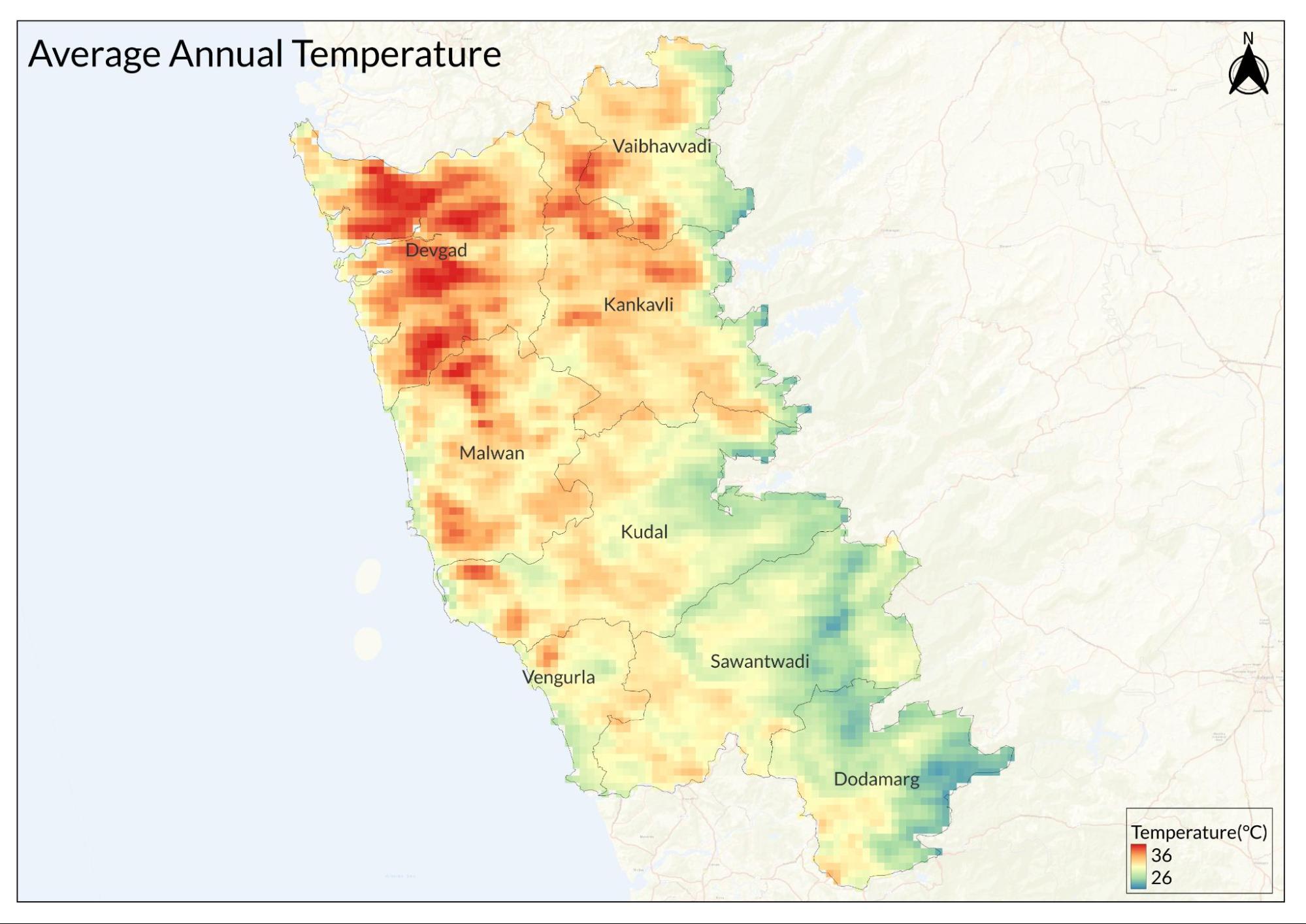
The region experiences three distinct seasons: the rainy season from June to October, winter from November to mid-February, and summer from mid-February to May. The winter months offer a respite with more moderate temperatures ranging from 20°C to 28°C, making it an ideal time for visitors.
During the monsoon months, heavy rainfall averages around 3240.10 mm, with temperatures typically peaking between 30°C and 32°C.
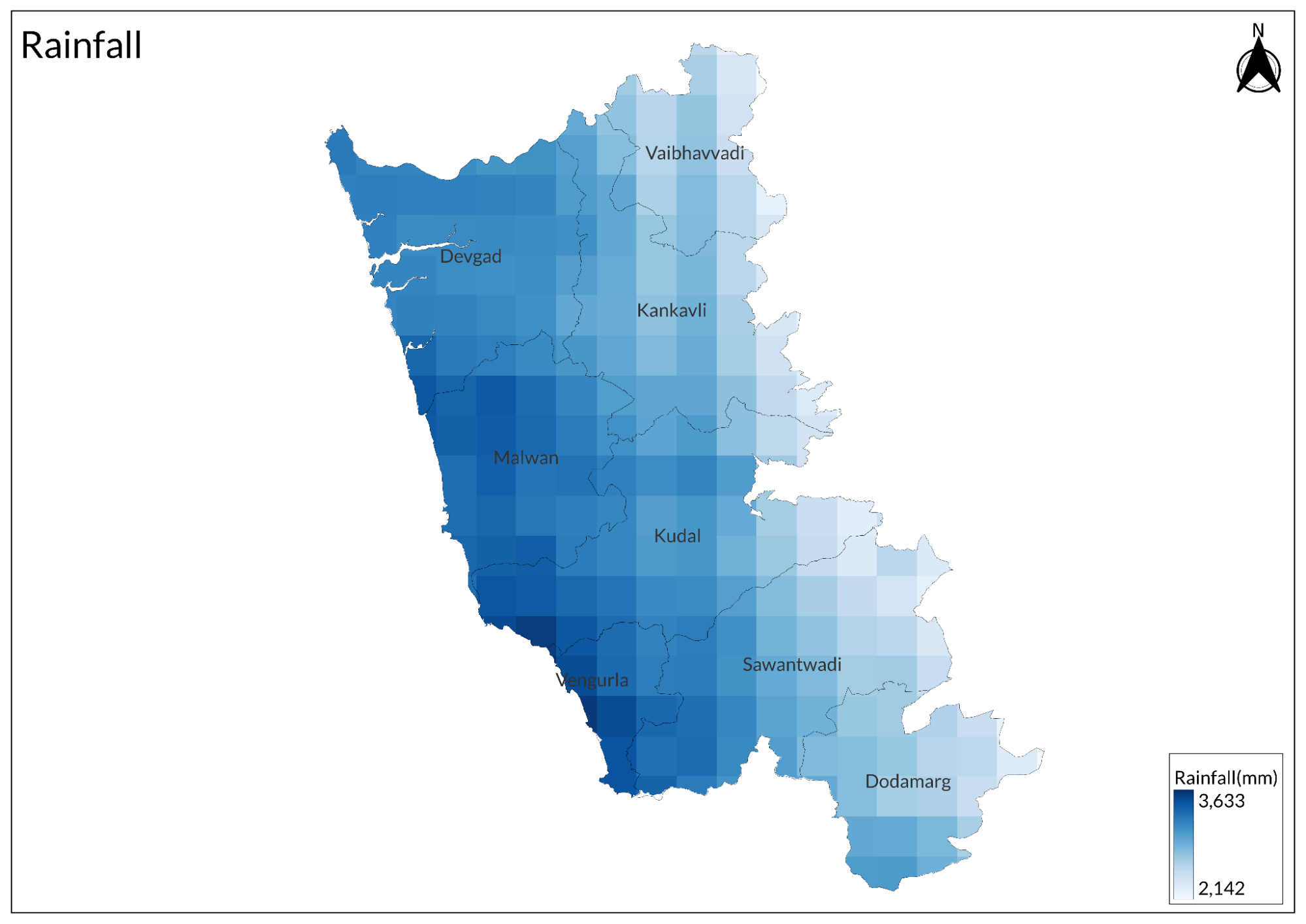
Geology
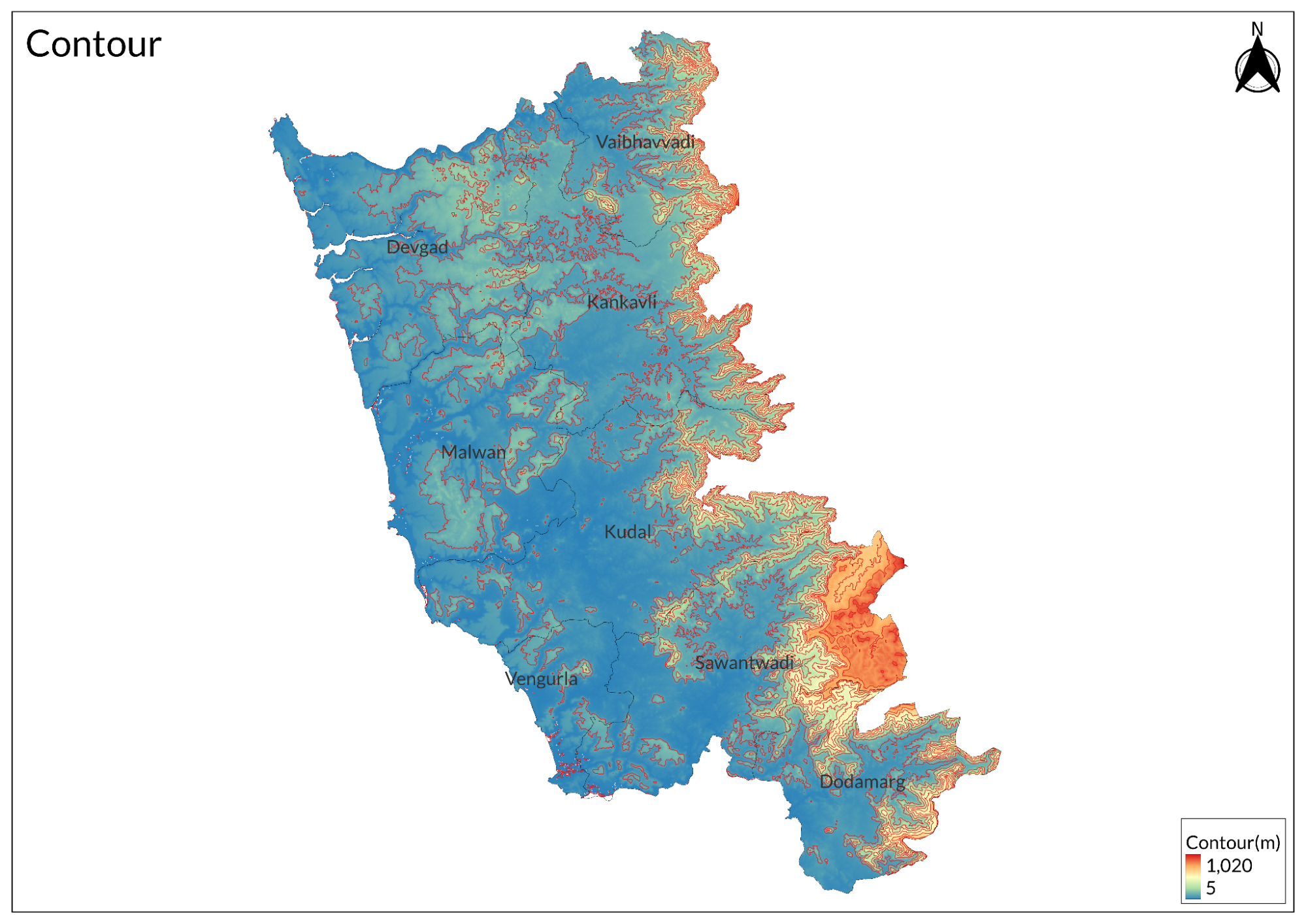
The Degve-Kalna-Asaniye Block in Sindhudurg District, Maharashtra, is a significant area for the exploration of iron ore and manganese, as outlined in the geological report prepared under the National Mineral Exploration Trust (NMET) program. This block spans an area of 93 square kilometers and is strategically located near the Goa border, making it accessible by both rail and road.
Soil

The district has four main soil types: Rice soil, Garden soil, Varkas soil, and Alluvial soil. Rice soils, also known as 'Mali' soils at higher elevations and 'Kuryat' soils at lower levels, are primarily found in the valley regions. These soils are characterized by their fertility, making them suitable for rice cultivation. Varkas soils, which are reddish-brown to yellowish-red in color, are located on hill slopes and are generally poor in fertility, shallow, and coarse in texture. Garden soils arise from mixed origins and exhibit a yellow-red to brown coloration. These soils are typically found in valley areas, are well-drained, and possess moderate fertility. Alluvial soils, deposited along coastal tracts, consist of deep loam but have been affected by salinity due to seawater inundation, particularly in the Deogad, Malwan, and Vengurla talukas. The soil formation is predominantly derived from lateritic rocks, with the region's hilly terrain contributing to the complexity of soil types. The overall fertility and depth of these soils vary significantly across the district, impacting agricultural practices and crop selection.
Minerals
The geological framework of Sindhudurg includes Dharwarian metasediments, Kaladgi formations, and Deccan Trap basalt. The Dharwarian rocks are known for their low primary porosity and permeability, which limits groundwater storage but allows for some aquifer development through secondary porosity. Kaladgi rocks, consisting mainly of orthoquartzite and sandstone, exhibit better water-bearing properties due to their jointed structure.
Iron ore deposits are particularly concentrated in the Degve-Kalna-Asaniye Block, where exploration has revealed iron content ranging from 31.72% to 58.26%. Manganese deposits are also present, contributing to the district's mineral wealth. The coastal alluvial soils found along the western part of Sindhudurg are recent deposits that can be affected by salinity due to sea water intrusion, particularly in areas like Deogad, Malwan, and Vengurla. This salinity can impact agricultural practices and the quality of groundwater resources.
Rivers
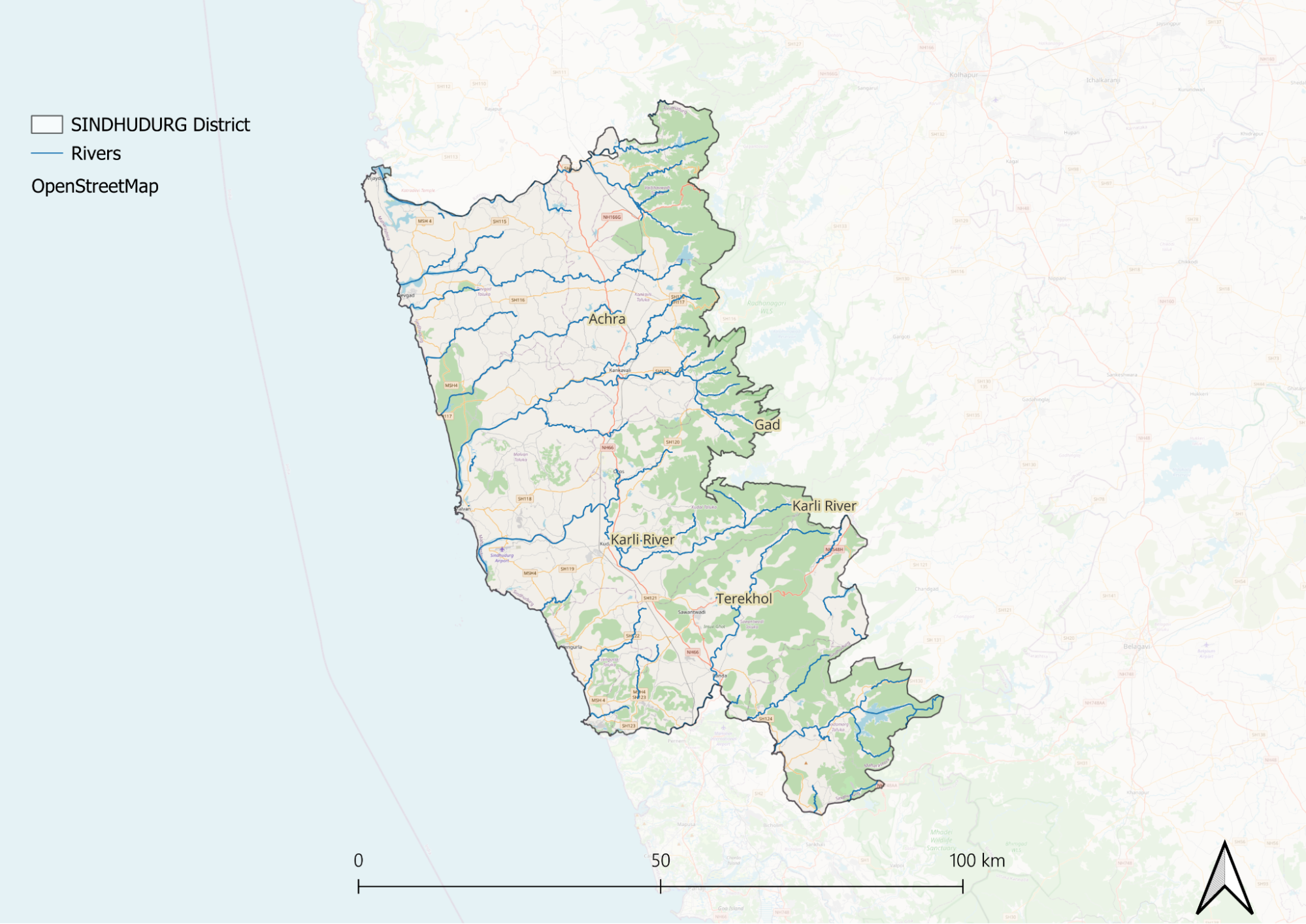
Sindhudurg District in Maharashtra is home to several significant rivers, including Vaghotan, Devgad, Karli, Gad, Tilari, and Terekhol. These rivers originate from the fresh mountain streams of the Sahyadri range and flow westward, ultimately emptying into the Arabian Sea. During the monsoon season, these rivers experience heavy rainfall, which can lead to flooding. Conversely, in the summer months, groundwater depletion often causes the rivers to dry up significantly. The breadth of these rivers is generally narrow, limiting their capacity for water transport. As a result, very few vessels navigate these waterways. The backwaters near the Arabian Sea, particularly at Kalaval, Achara, Mochemad, and Devgad, are utilized for anchoring fishing boats. Fishing activities and limited water transport are primarily conducted in these backwaters, highlighting their importance to local livelihoods.
Botany
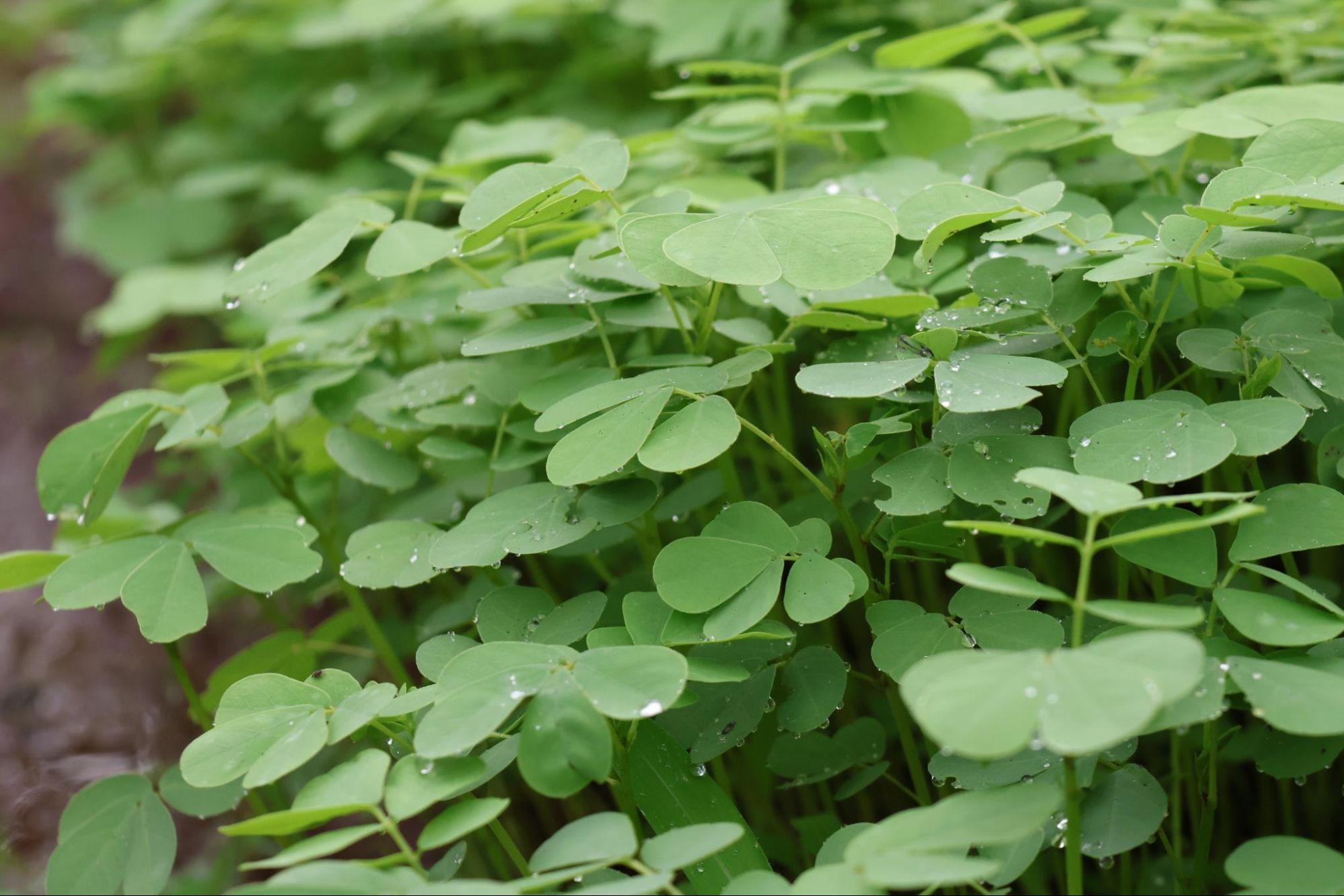
According to locals, there are more than 200 wild vegetables. Records indicate that there are around 60 wild vegetables. A few of them include Firangi, Takla, Lajalu, and others. These forests are home to plant species which are endemic to the Western Ghats. Additionally, the coastal areas feature significant mangrove ecosystems that play a crucial role in coastal protection and biodiversity, supporting species such as Avicennia marina and Rhizophora mucronata. The agricultural landscape of Sindhudurg further enhances its floral diversity, with the region being famous for its cultivation of tropical fruits like Alphonso mangoes and cashews. These crops thrive in the district's humid climate and contribute significantly to the local economy.
Wild Animals
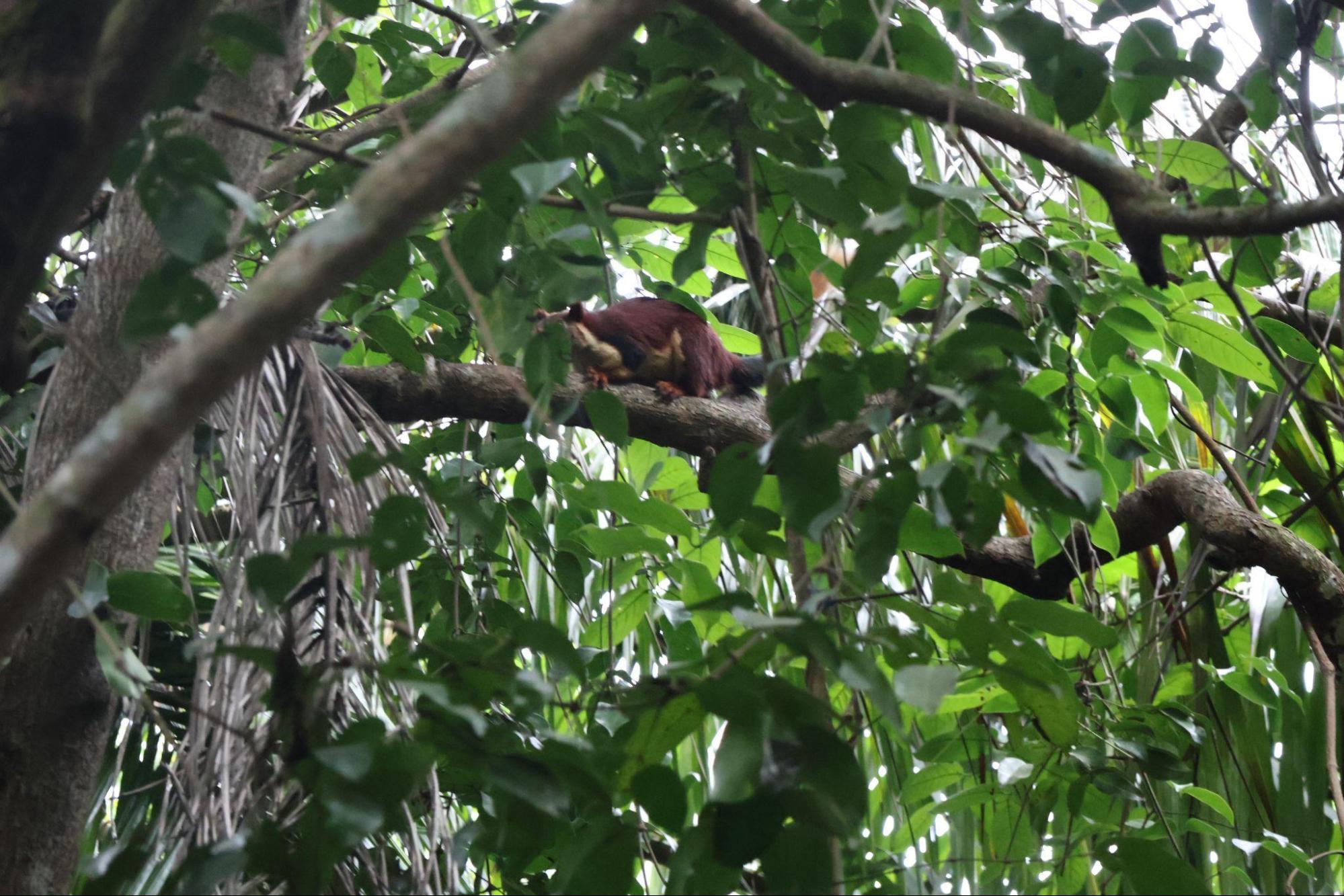
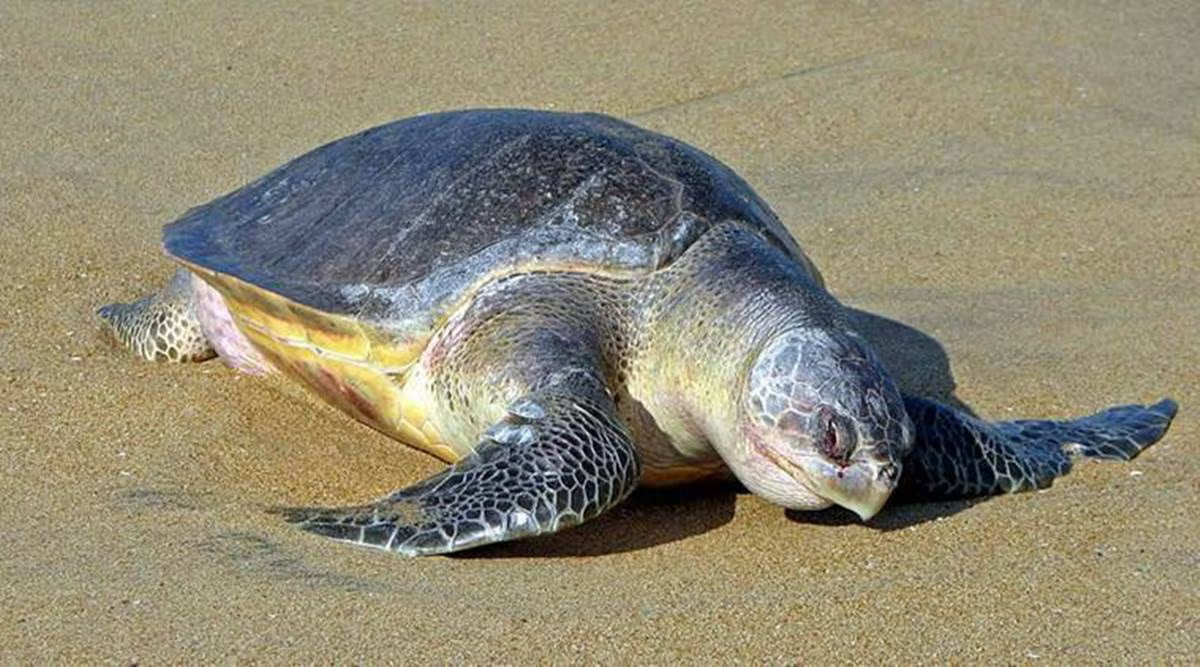
The forests are also inhabited by animals like wild deer and bison, particularly in conservation areas like Dajipur, which is surrounded by rugged mountains and dense vegetation.
Birds
In terms of avian fauna, Sindhudurg is particularly rich, with over 200 bird species recorded in areas like Amboli Ghat. This includes various families such as Accipitridae and Muscicapidae, which are well represented in the region. Additionally, a checklist from eBird indicates that around 480 bird species have been observed in Sindhudurg, with 22 classified as globally threatened.
Crustaceans (Crabs) of Amboli
Gubernatoriana longipes
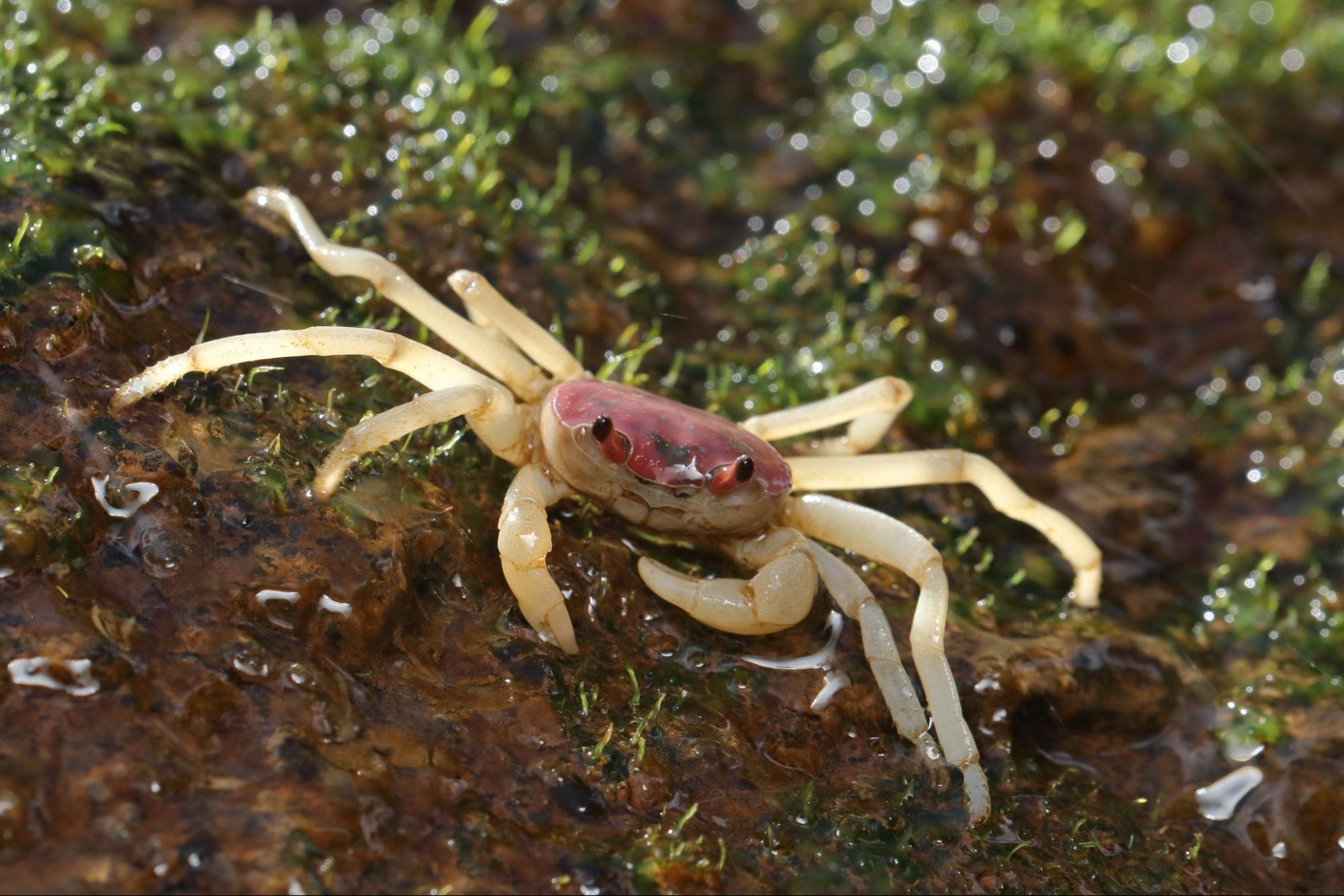
The village of Amboli is home to unique and unusual flora and fauna, which has earned it the title of being an "Ecological Hotspot”. Discovered in 2018, Gubernatoriana longipes is one of the many endemic species of crabs that are found in the freshwaters of the village. The unique features of this diurnal species are its long legs, which are the reason behind it being named longipes ("longipes" is a Latin term meaning "long-footed" or "long-legged"), the varying sizes of both of its claws (one is larger than the other) and the color of the Cephalothorax (chest and head) of males being either Gray or Pink. They are known to grow up to 2 cm and have only been observed to live in freshwater waterfalls and on moist rocks. Their diets consist of freshwater prawns and fish, earthworms, green moss, smaller insects and their larvae, and other crabs.
Ghatiana atropurpurea
Ghatiana atropurpurea, commonly known as the purple tree crab, is an arboreal species with a strong preference for the jamun tree, whose dark purple fruit closely matches the crab’s vivid shell coloration. This species was first discovered in July 2015, in rain-filled tree holes in Amboli, Maharashtra. Additional sightings occurred in Hathipal, Goa, where both mature and immature adults were observed inhabiting ground-level tree holes, while younger individuals were found foraging in the undergrowth or sheltering beneath rocks.
The species name, atropurpurea, is derived from the Latin word for dark purple (atropurpureus), a nod to its distinctive broad, deep purple carapace, which sets it apart from other newly identified crabs in the region. Before being formally described by scientists, it was already familiar to local communities, who referred to it as the purple tree crab. Locals had also noted its scavenging behavior, having observed it feeding on millipedes and snakes that had been accidentally killed by vehicles.
One of the notable physical traits of G. atropurpurea is its asymmetrical pincers, with one claw significantly larger than the other. The larger claw features four to five prominent teeth on its inner edge, which creates a gap when the claw tips meet. This structural adaptation is thought to assist in gripping food and in mate competition. However, researchers suggest that the size and shape differences in pincers across species and between sexes are likely influenced by a combination of factors such as foraging strategies, sexual selection, and defense, rather than a single evolutionary driver.
Despite its unique ecological niche, G. atropurpurea faces several human-induced threats, including water pollution, deforestation, and habitat alteration for agriculture, which pose a risk to its survival in the wild.
Ghatiana splendida
This striking crab species, named for its vibrant appearance, features a pink-colored shell and pincers, complemented by bright orange legs. It was discovered near Amboli, Maharashtra, where it was observed feeding and sheltering among cracks in basaltic rocks on a plateau during the monsoon season, when rainwater fills the natural crevices.
The species was identified by Tejas Thackeray, and like many others in its genus, it displays asymmetrical claw-bearing legs, with the left claw significantly larger than the right. Sexual dimorphism is also evident in the structure of the larger claw: in males, the fingers of the larger claw bear six to seven blunt teeth and leave a large gap when the tips meet. In females, the same claw features nine to ten teeth with a smaller gap, reflecting subtle functional differences possibly related to foraging or reproductive behavior.
This species’ vivid coloration and specialized physical traits make it one of the most visually distinctive freshwater crabs found in the Western Ghats.
Forest Reserves
Malvan Marine Sanctuary
The Malvan Marine Sanctuary, located in the Malvan Taluka of Sindhudurg district, Maharashtra, is the only marine sanctuary in the state and was established on April 13, 1987. Covering an area of 29.22 square kilometers, it includes a core zone of 3.182 square kilometers and a buffer zone of 25.94 square kilometers. The sanctuary is renowned for its rich biodiversity, featuring diverse marine flora and fauna, including coral reefs, sea anemones, mollusks, polychaetes, pearl oysters, and various species of seaweed and mangroves. This unique ecosystem supports numerous marine species and offers excellent opportunities for activities like scuba diving and snorkeling due to its relatively clear waters. In addition to its ecological significance, the sanctuary is also a popular tourist destination, attracting visitors with its stunning coastal landscapes characterized by golden sands and casuarina plantations. Nearby attractions include the historic Sindhudurg Fort and beautiful beaches such as Tondavali, Tarakali, and Vengurla. The sanctuary provides accommodation options through the Forest Department's Akeri Rest Houses, making it accessible for eco-tourism.
Land Use
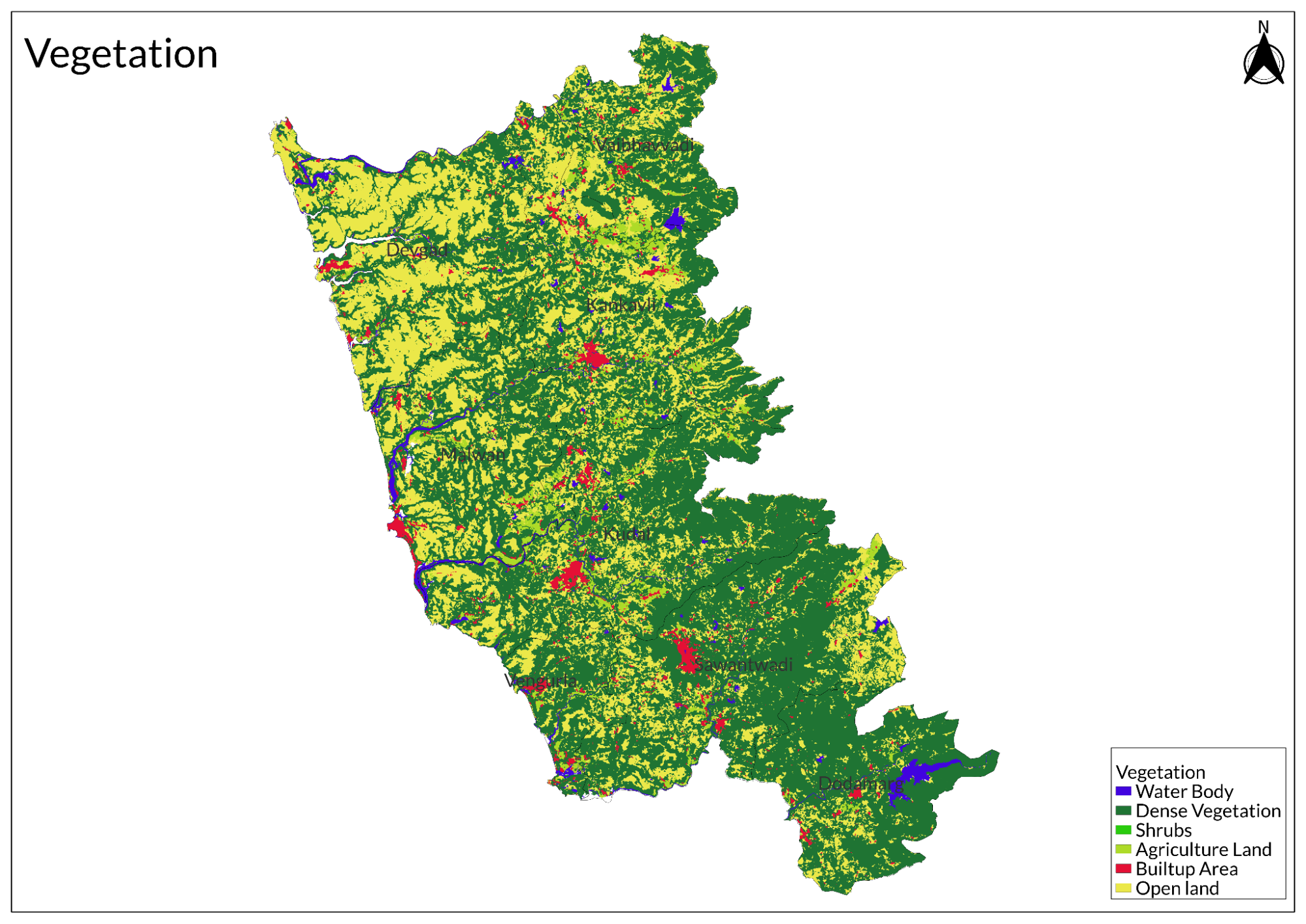
Environmental Concerns
Deforestation
Deforestation in Sindhudurg district, Maharashtra, has emerged as a significant environmental concern, driven by various human activities that threaten the region's ecological balance. The primary causes of deforestation include illegal tree cutting, which is often alleged to occur with the complicity of forest officials, allowing for unchecked exploitation of forest resources. Additionally, mining and infrastructure development have led to extensive tree felling, as forests are cleared for roads, mining operations, and plantations. Encroachment by local communities for livestock grazing further exacerbates the problem, as they invade forested areas that are vital for biodiversity.
The consequences of deforestation in Sindhudurg are profound and multifaceted. One of the most alarming effects is the loss of biodiversity, as the destruction of habitats can lead to the extinction of various species native to the region. Moreover, deforestation contributes to water scarcity, affecting both urban areas and rural villages reliant on forest ecosystems for their water supply. This environmental degradation also increases the likelihood of droughts, as reduced tree cover diminishes rainfall patterns. Furthermore, the disruption of natural habitats has been linked to the spread of diseases, such as Kyasanur Forest Disease, which poses a health risk to local populations.
Recent reports indicate that despite legal protections and court orders aimed at preserving these vital ecosystems, illegal activities continue unabated. For instance, significant areas within the Dodamarg-Sawantwadi wildlife corridor have been cleared for various purposes, highlighting a troubling trend where environmental regulations are frequently ignored.
Overfishing
Overfishing in Malvan, Maharashtra, threatens both the local fishing community and marine biodiversity. The Gabit community, known for sustainable fishing, faces challenges due to industrial fishing practices that exploit marine resources. While the Gabits use selective mesh sizes and avoid fishing during the breeding season in August, industrial trawlers disrupt these efforts by dragging large nets across the seabed, capturing vast amounts of fish, including juveniles. Despite a ban on purse seine nets, illegal fishing continues, worsening the depletion of fish stocks.
To address this, a ban on mechanized fishing from 1 June to 31 July was implemented in 2021. However, ongoing pressures from industrial fishing and the economic impact of COVID-19 have forced many traditional fishers to seek alternative jobs or join industrial operations.
Climate change further worsens the situation. Rising coastal water temperatures and frequent cyclones have made traditional fishing riskier, while industrial trawlers continue operating in deeper waters. Fish migration patterns are changing, with jellyfish populations increasing due to declining turtle numbers. In 2019, Maharashtra recorded its lowest fish catch in 45 years, dropping 32% from the previous year.
The ecological impact extends beyond overfishing. Trawlers damage marine habitats, disrupt ecosystems, and reduce biodiversity, making marine environments more vulnerable to climate change. Warming waters are also affecting phytoplankton, essential for marine food chains and global carbon cycles.
The Gabit community faces growing socio-economic challenges, with younger generations moving away from fishing for stable jobs. If these issues persist, both livelihoods and the cultural heritage of traditional fishing may be lost.
Mining industry
The mining industry in Sindhudurg district, Maharashtra, particularly in the village of Redi, has had profound negative impacts on the environment. Redi, located on the Konkan coast, has a history of iron ore mining that began in 1950 and has continued intermittently, with current operations conducted by Gogte Minerals. The ecological consequences of this mining activity are alarming, especially given that Sindhudurg is designated as an eco-sensitive zone and a biodiversity hotspot.
Mining operations have significantly altered the landscape and ecology of Redi. The open-cast mining method employed here involves excavating ore from depths of up to 50 meters below sea level, which has disrupted local water tables and degraded groundwater quality. The proximity of mining activities to the Arabian Sea has led to seawater intrusion into freshwater supplies, further compromising water quality. Additionally, while there is no direct dumping into the sea, ore dust from mining activities is carried by currents and winds into marine ecosystems, leading to pollution. The accumulation of mining silt on beaches has affected coastal morphology and the habitats of various marine species. Traditional fishing communities that have relied on these waters for generations have reported a decline in marine biodiversity due to these mining effluents.
The ecological impact extends to the loss of native flora and fauna. Mining activities have replaced native trees with acacia plantations, which do not support local wildlife as effectively as indigenous species. This shift has resulted in a noticeable decline in wildlife sightings, including birds that were once common in the area.
While mining has provided some economic benefits by creating jobs and improving housing conditions for locals, it has also led to significant health issues among residents. Dust from mining operations contributes to respiratory problems, while contaminated drinking water sources have increased instances of thyroid disease and kidney stones. The reliance on mining for employment has made villagers vulnerable; many fear losing their jobs if mining activities were to cease.
Moreover, the influx of migrant workers from other states has changed the demographic landscape of Redi, leading to competition for jobs and resources. Local educational initiatives supported by mining companies have also dwindled, leaving residents with limited access to quality education. The current trajectory of mining in Redi raises critical questions about sustainability and environmental stewardship. With leases extending until 2056, there is an urgent need for responsible mining practices that consider both economic benefits and ecological health.
Impact of Coastal Tourism
Coastal tourism in Sindhudurg district, Maharashtra, faces several pressing challenges that impact both the environment and local communities. Observations indicate a lack of comprehensive mapping of land use and land cover changes since 1961, making it difficult to assess the ecological consequences of tourism development. Cadastral maps, which are outdated and not geo-referenced, hinder effective monitoring of new infrastructure such as hotels and homestays. Additionally, the coastline's dynamic nature (whether eroding or accreting) has not been adequately mapped, leading to unregulated sand extraction for construction, which further exacerbates environmental degradation.
The local fishing community is experiencing marginalization due to the encroachment of commercial trawlers and persian net fishing. This has resulted in a decline in traditional fishing groups, with fishing grounds remaining unregulated and poorly mapped. The rich coral reefs that attract tourists for activities like scuba diving and snorkeling are under threat from improper tourist conduct, as there are no established guidelines or safety protocols for service providers. Furthermore, the beaches, primarily geomorphologically classified as spits, face traffic management challenges due to concentrated tourist activity along narrow access roads. Waste management policies are lacking in popular tourist villages like Devbag and Tarkarli, contributing to environmental pollution. The absence of carrying capacity studies raises concerns about water quality and resource sustainability in heavily visited areas. Additionally, there is insufficient promotion of local products and cultural heritage within tourism initiatives, which could enhance sustainable development.
Conservation Efforts/Protests
Mangrove Safari
In Sindhudurg district, Maharashtra, a group of women known as the Swamini self-help group has taken significant strides in protecting the local mangrove ecosystems through eco-tourism initiatives. Formed in 2017 and led by Shweta Hule, this group comprises ten members who have successfully organized mangrove safaris in the Mandavi creek of Vengurla taluka. Despite covering only 3.8% of Maharashtra's total mangrove area, Sindhudurg is rich in biodiversity, hosting rare and endangered species that the Swamini group aims to protect while promoting sustainable tourism.
The idea for the mangrove safari emerged from Shweta Hule's passion for the natural beauty of Mandavi creek, which had previously gone unnoticed by tourists despite being located just a two-hour drive from the bustling beaches of Goa. The group approached the Maharashtra Mangrove Cell, which collaborates with UNDP India on biodiversity initiatives, to propose their eco-tourism venture. The Mangrove Cell supported their initiative by providing essential resources such as boats and life jackets.
The mangrove safari experience includes a guided boat ride into the creek, where Swamini members educate tourists about the diverse flora and fauna. Tourists are introduced to various species of mangroves and birds, including egrets, herons, storks, and cormorants. The safaris have gained popularity over the years, generating significant income for the group: approximately ₹200,000 during the last tourist season before the pandemic disrupted operations.
Initially unfamiliar with mangroves beyond their local name "kaandal," Shweta and her team underwent training facilitated by the UNDP-GEF Project staff. They learned to identify eight species of mangroves native to the area and gained skills in rowing boats to conduct tours effectively. This knowledge not only empowered them but also enabled them to raise awareness about mangrove conservation among villagers and visitors.
Graphs
Water
Climate & Atmosphere
Forests & Ecology
Human Footprint
Sources
Central Ground Water Board (CGWB). District Groundwater Profile: Sindhudurg, Maharashtra. Ministry of Jal Shakti, Government of India.https://www.cgwb.gov.in/old_website/District…
Hindustan Times. 2021. Trees Along Konkan Wildlife Corridor Felled for Mining Infrastructure. Hindustan Times.https://www.hindustantimes.com/mumbai-news/t…
Mahamtb_wildlife. Instagram. comhttps://www.instagram.com/p/DKuOuV4CN9-/?hl=…
Mongabay India. 2020. A Group of Women Protect Sindhudurg’s Mangroves Through Eco-Tourism. Mongabay India.https://india.mongabay.com/2020/11/a-group-o…
National Mineral Exploration Trust (NMET). Degve-Kalna-G4 Mn Maharashtra Exploration Report. Government of India.https://nmet.gov.in/upload/uploadfiles/files…
Richa Malhotra. 2016. Meet the Western Ghats’ Wonderful New Freshwater Crabs. Science The Wire.https://science.thewire.in/science/meet-the-…
Sindhudurg District Administration. District at a Glance: Rivers and Water Resources of Sindhudurg. Government of Maharashtra.https://sindhudurg.nic.in/en/about_district/…
Social Science Research Network (SSRN). Research Paper on Environmental and Social Impacts in Sindhudurg. SSRN Journal.https://papers.ssrn.com/sol3/papers.cfm?abst…
The Bastion. 2021. The Impacts of Unsustainable Iron Ore Mining on Redi, Maharashtra's Last Konkan Village. The Bastion.https://thebastion.co.in/politics-and/the-im…
Wikipedia contributors. Sindhudurg District. Wikipedia.https://en.wikipedia.org/wiki/Sindhudurg_dis…
Youth Ki Awaaz. 2021. Fishermen of Gabit, Maharashtra: Climate Change Impact on Livelihoods. Youth Ki Awaaz.https://www.youthkiawaaz.com/2021/10/fisherm…
Last updated on 6 November 2025. Help us improve the information on this page by clicking on suggest edits or writing to us.